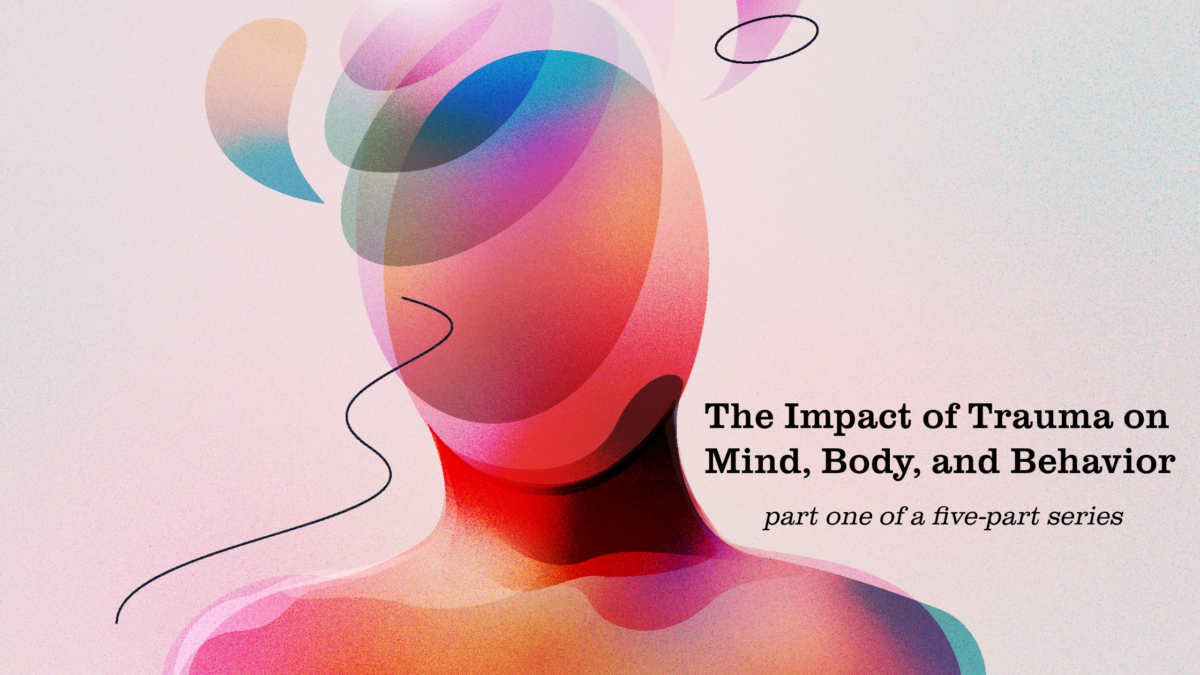During the next few weeks we are excited to offer a 5-part series about trauma and it’s impact on mind, body, and behavior. Make sure to catch them all!
An Introduction to Trauma
What is Trauma?
The term “trauma” has become increasingly common in recent years, but what does it truly mean? Trauma is commonly understood to be an emotional reaction that leads to enduring negative health impacts on a person’s psychological well-being, resulting in acute or chronic mental and physical impairment or dysfunction¹. But what qualifies as a “traumatic” event? A traumatic event can include a wide range of experiences, including accidents, criminal acts, natural disasters, physical or emotional abuse, acts of violence, the loss of a loved one, or exposure to war¹.
Who is Affected?
Trauma can affect anyone, from any demographic, at any point in their lives, with approximately 70 percent of people worldwide experiencing at least one potentially traumatic event during their lifetime². Furthermore, around 30 percent are exposed to four or more traumatic events, with the most common including motor vehicle crashes, life-threatening illnesses or injuries, witnessing death or serious injury, or the unexpected loss of a loved one³.
Some groups are more vulnerable to experiencing trauma, however. For example, younger people are more likely to be exposed to trauma, possibly due to a larger engagement in high-risk activities, or less life experience in managing threats³. Another vulnerable population is people with lower education or income, with lower socioeconomic status being associated with certain types of trauma, especially those linked to crime, community violence, or unsafe living conditions³.
When examining trauma by gender, overall, men are generally more likely than women to experience traumatic events—particularly those related to accidents, physical violence, or witnessing trauma³. However, women are more likely to experience certain high-intensity traumas, especially sexual violence and intimate partner violence³.

Are Trauma and PTSD the Same?
As previously mentioned, while experiencing traumatic events is unfortunately quite common, only a small percentage of people (5.6 percent) develop PTSD, or post-traumatic stress disorder, as a result². It is common for people to experience distress or other mental health challenges after a potentially traumatic event, but this does not necessarily indicate the presence of PTSD. For example, PTSD is a mental health diagnosis that involves a specific set of symptoms, such as intrusive thoughts,
avoidance behaviors, negative changes in mood or cognition, and heightened arousal, that last for more than a month and greatly impair a person’s daily functioning⁴.
Understanding trauma and its potential to develop into PTSD is only part of the picture. Trauma can leave a lasting impact not only on a person’s mental health, but also on their thoughts, emotions, physical well-being, and behavior. To gain a better view of trauma’s impacts, it is important to explore how it affects our mind, body, and behavior—while also considering the paths toward awareness, healing, and resilience.

Stay tuned for the next post in this series about the impact of trauma!
Published May 28, 2025. By Gavin C. Newberry, MPH, Data Analyst for Missouri Partners in Prevention.
References
1. American Psychological Association. (n.d.). Trauma. https://www.apa.org/topics/trauma
2. World Health Organization. (2022). Post-traumatic stress disorder. https://www.who.int/news-room/fact-sheets/detail/post-traumatic-stress-disorder
3. Benjet, C., Bromet, E., Karam, E. G., Kessler, R. C., McLaughlin, K. A., Ruscio, A. M., Shahly, V., Stein, D. J., Petukhova, M., Hill, E. D., Alonso, J., Atwoli, L., Bunting, B., Carmen Viana, M., De Girolamo, G., Florescu, S., Huang, Y., Lepine, J. P., Navarro-Mateu, F., … Koenen, K. C. (2016). The epidemiology of traumatic event exposure worldwide: Results from the World Mental Health Survey Consortium. Psychological Medicine, 46(2), 327–343. https://doi.org/10.1017/S0033291715001981
4. American Psychiatric Association. (2013). Diagnostic and statistical manual of mental disorders (5th Edition). American Psychiatric Publishing.
